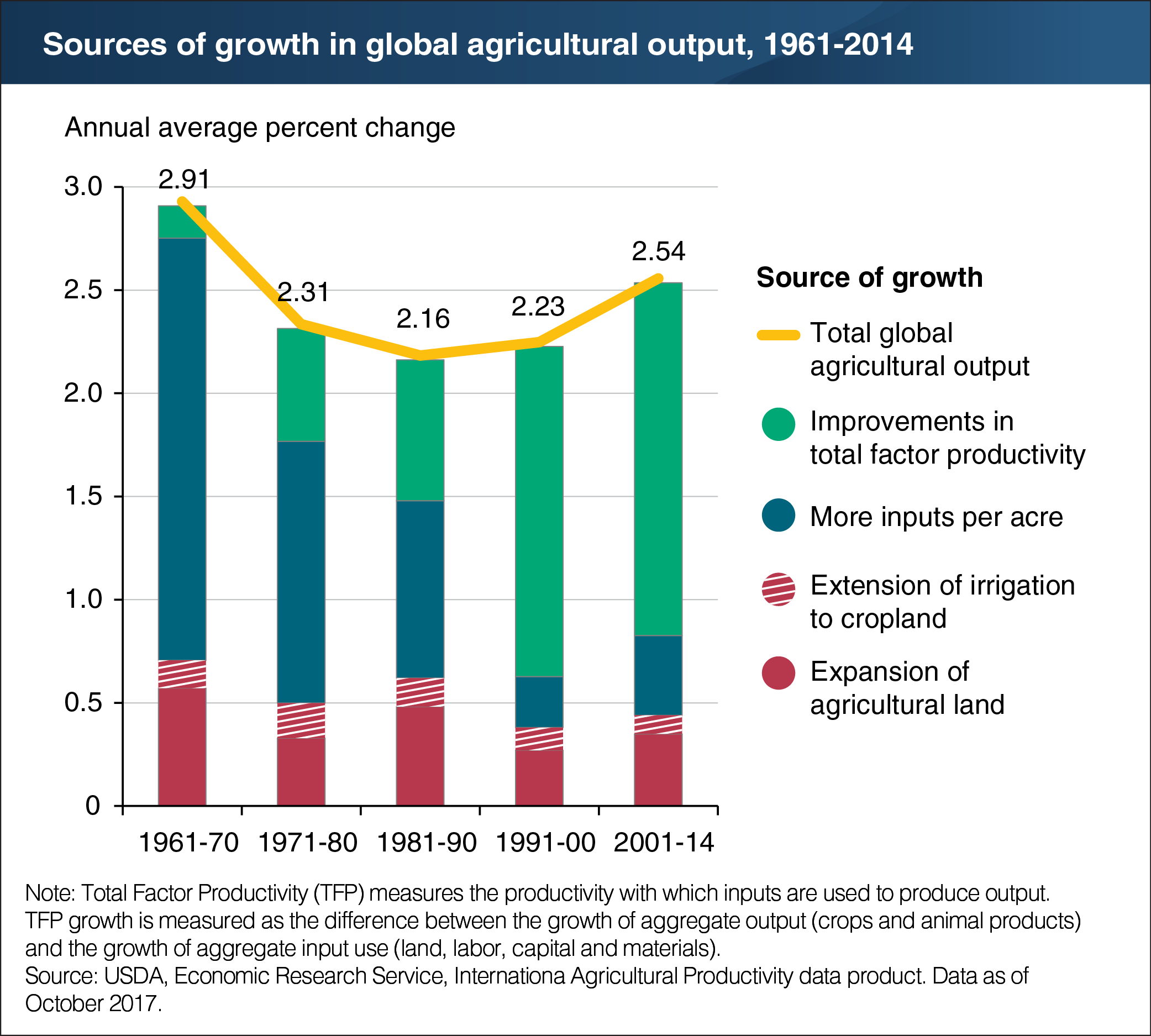Productivity has replaced resource intensification as the primary source of growth in global agriculture output
- by Keith Fuglie and Nicholas Rada
- 5/1/2018

Since the 1990s, productivity growth has driven the growth in global agricultural output of total crop and livestock commodities, helping to make food more abundant and cheaper worldwide. Global output growth initially slowed in the 1970s and 1980s, but then accelerated in the 1990s and 2000s. In the latest period (2001-14), global output of total crop and livestock commodities expanded at an average rate of 2.5 percent per year. In the decades prior to 1990, most output growth came about from intensification of input use, such as using more labor, capital, and material inputs per acre of agricultural land. Bringing new land into agricultural production and extending irrigation to existing agricultural land were also important sources of growth. Over the last two decades, however, the rate of growth in agricultural resources (land, labor, capital, etc.) has significantly slowed. By comparison, improvements in total factor productivity have increased, accounting for about two-thirds of global output growth during 2001-14. TFP growth reflects the use of new technology, efficiency improvement, and changes in management by agricultural producers around the world. This chart appears in the ERS topic page for International Agricultural Productivity, updated October 2017.


